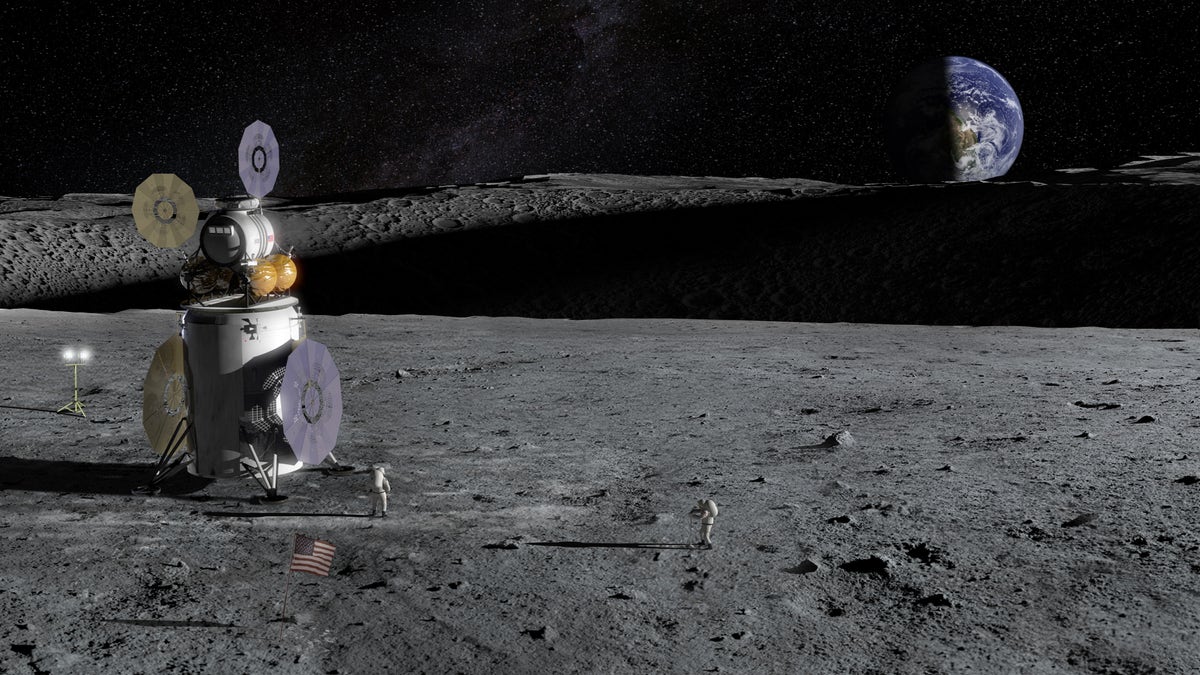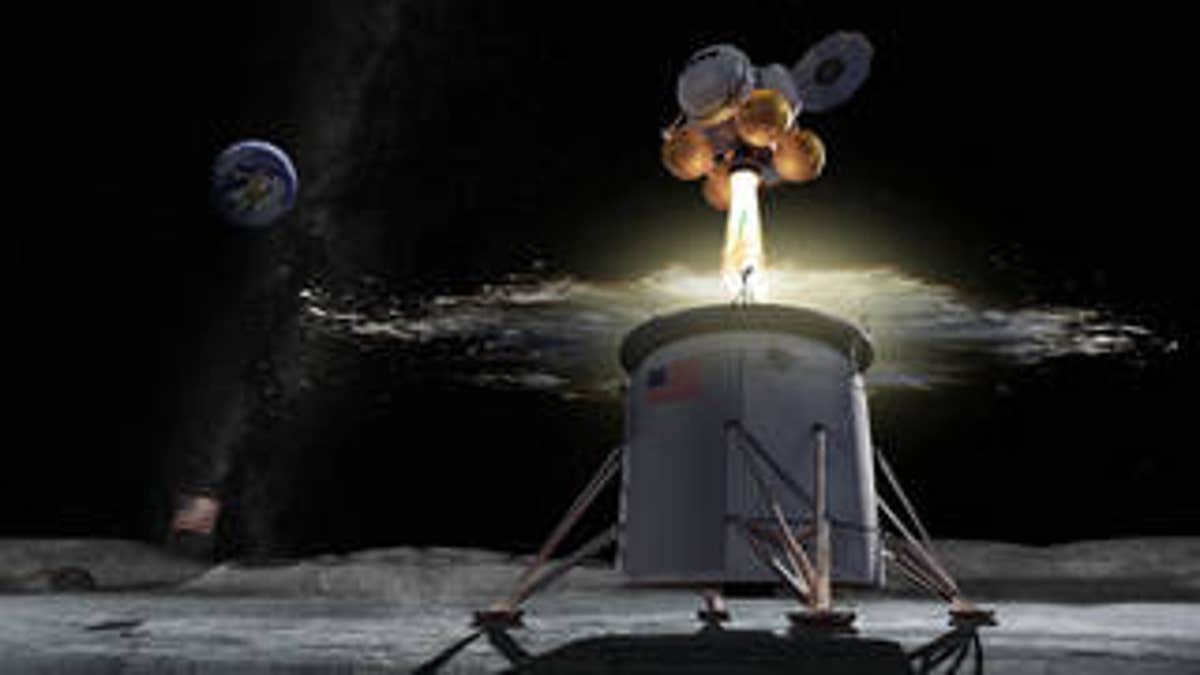Vice President Mike Pence delivers remarks on 50th anniversary of Apollo 11 moon landing
Vice President Mike Pence celebrates the Apollo 11 team that made the moon landing possible and discusses the future of space exploration for the U.S.
NASA has revealed details of its vision for the Artemis Moon Lander that will return U.S. astronauts to the lunar surface by 2024.
In a notice posted to the Federal Business Opportunities website, NASA seeks “proposals from industry for the development of integrated human lunar landers and execution of crewed flight demonstrations to the lunar surface by 2024.”
The Artemis program aims to land American astronauts on the Moon by 2024 and establish a sustainable human presence on Earth’s natural satellite. Artemis will also make history by landing the first woman on the Moon.
Speaking at Kennedy Space Center on the 50th anniversary of the Apollo 11 Moon landing on July 20, Vice President Mike Pence announced that the Orion capsule that will take American astronauts back to the Moon is ready.

Artist's impression of the Artemis Lander on the lunar surface. (NASA)
In the documents posted on the FBO website, NASA explains that astronauts will be flown in an Orion spacecraft to the ‘Gateway,’ a space station orbiting the Moon. The Gateway vessel will be used to support the transfer of crew and supplies into the Moon lander.
“The Gateway will be our home base in lunar orbit – it is our command and service module for missions to the surface of the Moon. Using it as a port for the human landing system, its orbit around the Moon will give us access to the entire lunar surface, and a place to refurbish and refuel the landing system,” explains NASA Administrator, Jim Bridenstine, in a statement. “This is no small feat, and building a 21st century landing system takes the best of our government and private-sector teams.”
APOLLO 11’S MICHAEL COLLINS RECOUNTS THE CREW’S THREE-WEEK QUARANTINE ON THEIR RETURN FROM THE MOON
Initial mission capability for 2024 involves landing two astronauts on the Moon’s South Pole. Astronauts will live and work out of the lander for 6.5 days, according to NASA.

Artist's rendering of an ascent vehicle separating from a descent vehicle and departing the lunar surface. (NASA)
Longer-term, the Lander will need to transport four people to the lunar South Pole.
“For the initial missions, two crew will descend to the surface, and two will remain at Gateway/Orion,” said NASA, in its notice. “For sustainable phase missions, we expect up to four crew members on the surface.”
BUZZ ALDRIN PREDICTS ARTEMIS PROGRAM WILL LEAVE DECADES-LONG LEGACY LIKE APOLLO
While the initial moon landing capability for 2024 does not require a reusable vehicle, this will change. “Vehicle reuse will be a requirement,” explains the space agency.
NASA anticipates that a three-stage landing system will be used to take astronauts to and from the lunar surface. "The three-stage concept includes a transfer element for the journey from the lunar Gateway to low-lunar orbit, a descent element to carry the crew to the surface, and an ascent element to return them to the Gateway,” it explains, in a statement. “From there, they would board Orion for the 250,000-mile trip back to Earth.”
The space agency, however, says that it is also interested in alternative approaches “that can accomplish the same long-term goals of global lunar access and a reusable landing system.”
INDIA LAUNCHES HISTORIC MISSION TO THE MOON
After Apollo 11 astronauts Neil Armstrong and Buzz Aldrin set foot on the Moon on July 20, 1969, only 10 more men, all Americans, walked on the lunar surface. The last NASA astronaut to set foot on the Moon was Apollo 17 Mission Commander Gene Cernan on Dec. 14, 1972.
CLICK HERE TO GET THE FOX NEWS APP
The Moon looms large for many countries’ space programs. Earlier this week, for example, India launched its unmanned Chandrayaan-2 spacecraft on a mission to the lunar surface.
Follow James Rogers on Twitter @jamesjrogers





















